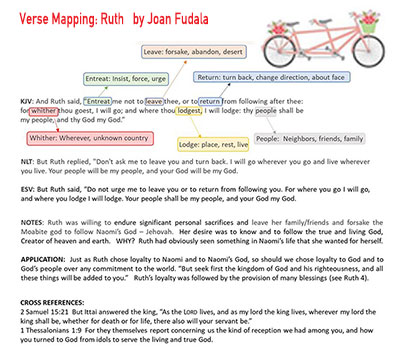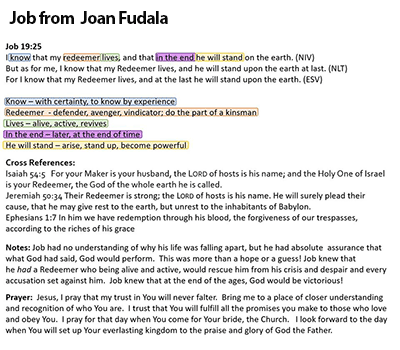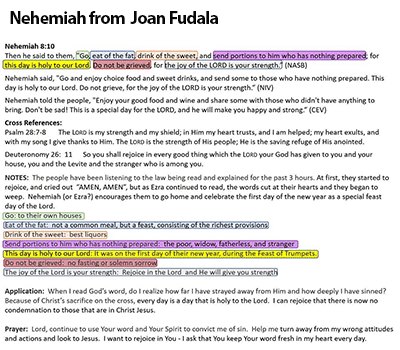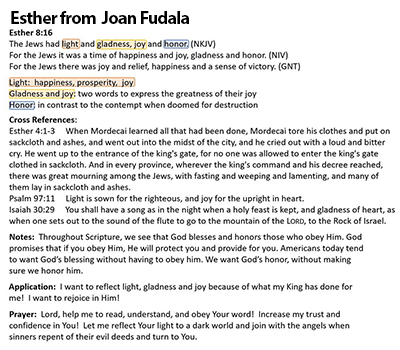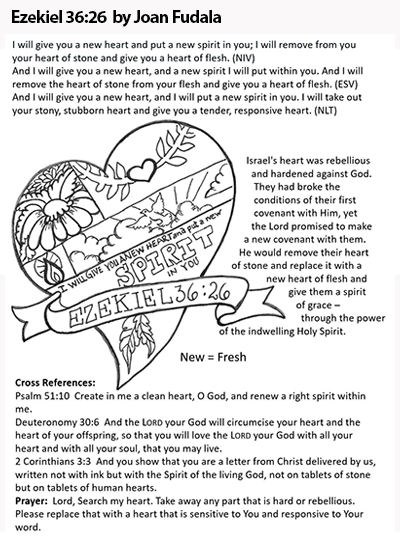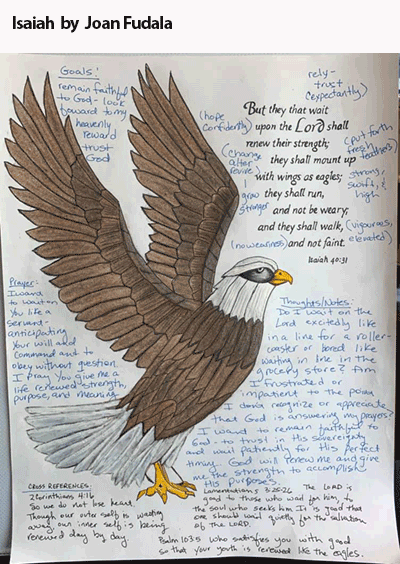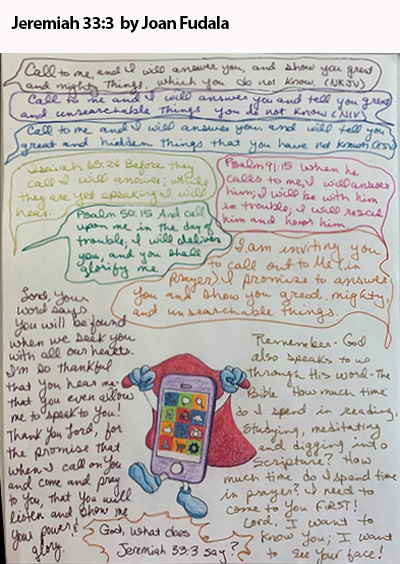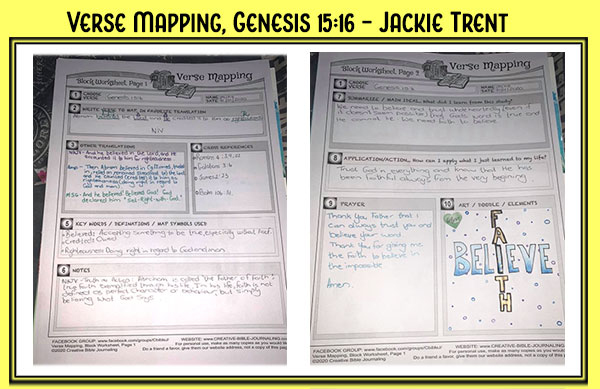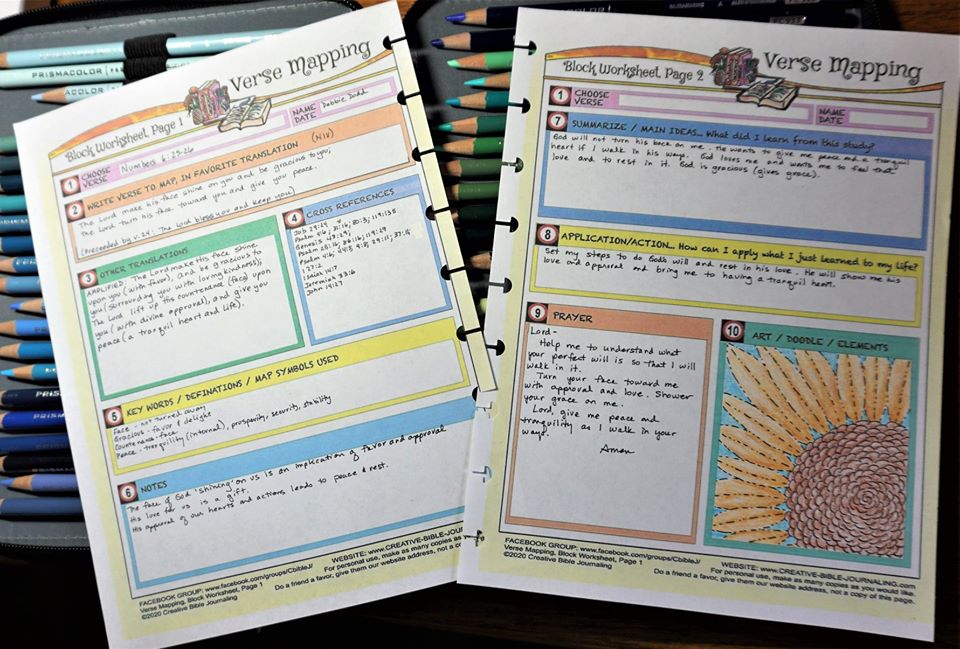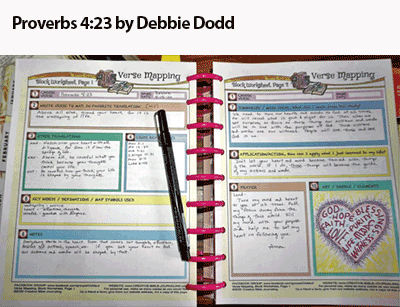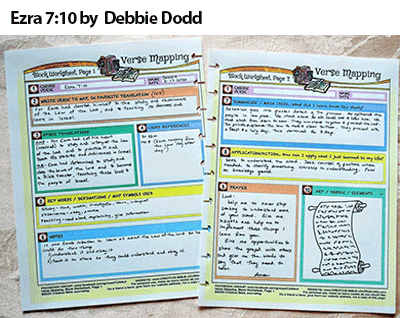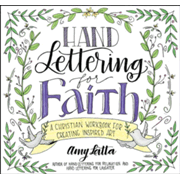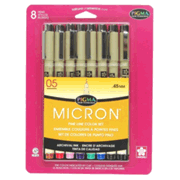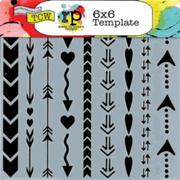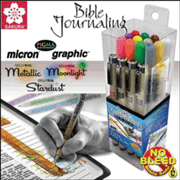Verse Mapping
Digging in God’s Word,
One verse at a time!
Everything you need, to dig deeper into God’s Word
Look on this page for Instructions, Information, Formats, Printables and Monthly Scheduled Verses
What is Verse Mapping?
Click teal “toggle dots” for answers
"Draw Near To God"
“Draw near to God and He will Draw near to you.”
How do you draw nearer to God? Dig deeper into His Word! One way to accomplish this is to use Verse Mapping to study the Bible and unpack the Scriptures. It is a visual method to record different translations, research similar verses, define key words, and allows you to discover the deeper meaning of the verse and how to apply it to your life. Verse Mapping will make you research word origins, examine historical context, and explore geography to learn more about Who God is and what He is trying to say to you through His Word.
Where To Start?
This is all about spending quality time with God. So get comfortable – PJs are just fine! Next, PRAY! I know it sounds simple and maybe a bit silly, but you want to start by asking God to guide you, direct you. The Holy Spirit inside of you will teach you what you need to learn: ask and you shall receive! Do you need sound? Listen to some Praise and Worship music. Need peace and quiet? Close the door to your room or minimize distractions.
Resources & Supplies?
Click teal “toggle dots” for answers
Basic Supplies
What do you need? Let’s gather some basics. More detailed information will be provided on the various study tools mentioned in the next session.
Something to write WITH: Pens, pencils or markers can be used. Keep in mind that colors can be used to annotate key words.
Something to write ON: Blank copy paper, a lined notebook, a journal with dot grids, and graph paper all work fine. You can also download and print our CBJ Verse Mapping pages, either colored or black and white.
A Bible. There are many versions available in numerous formats! Use your favorite! Please refer to https://www.biblegateway.com/, a trusted authority for online bible searching, for our approved list of bible translations for all members.
Optional Resources
- Concordance
- English Dictionary
- Bible Dictionary
- Study Bible
- Bible Background Commentary
- Interlinear Bible
- Bible Software
- Commentaries
- Cross Referencing Bible
- Dictionary of Biblical Imagery
- Maps
- Bible Handbook
- Any and all of these are available in book for as well as online.
Which Bible Should I use?
Click teal “toggle dots” for answers
Which Bible is used for Verse Mapping?
In Verse Mapping, one of the steps is to provide different bible translations for the same verse. For this installment, we will look at the major types of bibles available today with this in mind. Through experience we know the New International Version (NIV) does not read like the English Standard Version (ESV) and the New American Standard Bible (NASB) does not read like the King James Version (KJV) and yet they are all the word of God.
Translation vs Paraphrase
Today, people read the Scripture in either translations or paraphrases. However, a paraphrase is not the same thing as a translation. While a translation attempts to relate what the text of the Bible says, a paraphrase attempts to explain the meaning of the translation. Therefore, the paraphrase is more like a commentary.
Translations: Word-for-Word
Let’s look at the two types of translations: word-for-word (Formal Equivalence) and thought-for-thought (Dynamic Equivalence).
A word-for-word Bible translation is a Bible that aims to adhere as closely as possible to the wording and grammatical structure of the original text. Whenever possible, a word-for-word translation tries to translate each word, phrase, and concept in the original text with an exactly matching word, phrase, and concept in the target language. Some consider a word-for-word translation harder to understand, particularly when it comes to figures of speech that are not used in modern culture.
You should consider this type of bible if you:
1) Want a Bible experience that is closer to the vocabulary and phrasing that its original audiences read and heard;
2) Love majestic language and phrasing
3) Have access to a good study Bible, dictionary, or other tool to help you when you run across unfamiliar terms.
Examples of this translation include King James Version (KJV), New King James Version (NKJV, New American Standard Bible (NASB), and English Standard Version (ESV).
Translation: Thought for Thought
A thought-by-thought Bible seeks to express the meaning of each sentence or paragraph from the original language in simple up-to-date English without being tied to translating every word.
Translators take the original sentence and rearranges the word order so that it makes the most sense to a modern English-speaking audience. As such, these types of translations should not be exclusively relied on for doctrinal study. These translations attempt to keep a constant historical distance with regard to history and facts, but updates the writing style and grammar.
Examples include: New International Version (NIV), New Century Version (NCV) and New Living Translation (NLT).
Paraphrase
A Paraphrase has the primary goal of conveying the Bible in a simple, easy-to-understand language without regard to word-for-word or even thought-for-thought expressions of the original languages. Think of this as a retelling of something in your own words. A paraphrase takes the meaning of a verse or passage of Scripture and attempts to express the meaning in “plain language”. A paraphrase can be helpful to explain difficult words or phrases that sound strange and can aid in understanding the biblical message.
However, there is a danger: reading a paraphrase is not the same as reading the Bible. Unfortunately, this is not often understood. Many people who read a paraphrase assume they are reading the exact words of the Bible. The meaning of the text that is given in the paraphrase is assumed to be the meaning of the text of Scripture and this is not necessarily true.
Examples include The Living Bible (TLB) and The Message.
Which Concordance?
Click teal “toggle dots” answers
How is a Concordance Helpful?
A Bible concordance can be a helpful tool for studying the Bible. It is a great reference to use when wanting to do a more in-depth biblical study. A concordance helps you to dive deeper into the truest meanings contained within the Bible by learning the original word’s definition. It is also useful in locating passages in the Bible. It functions like a dictionary, because it is an alphabetically arranged book of biblical words and their definitions. But a concordance’s use extends far beyond that of a dictionary. It includes a list of the original Hebrew, Aramaic, and Greek words used within the Bible and their original definitions. Its functional purpose goes beyond that of a dictionary, because when looking up a word in a concordance, each word entry includes a full list of references from the Bible in which that word is used.
Example For Us
For instance, if you were to look up the word peace in a concordance, it would show you the definition of peace in the original language along with a listing of every verse in the Bible which uses the same word for peace. A concordance makes it easy to find specific Scriptures, study specific words, and find parallels in meaning between Scriptures.
Short vs Exhaustive Concordance
Most Bible publishers place a short concordance among the back pages of the Bible. If a concordance contains all the words in the Bible (including a, an, and the), it is called an “exhaustive” concordance. Several Bible concordances are found online and are available to use free of charge.
Translation-Specific Concordances
Concordances are translation-specific; that is, different concordances are based on different translations of the Bible. A concordance for the NASB will not help you find much in the ESV, simply because those two translations use different English words.
Original Language Study
A good concordance will also help with original language study. In Strong’s, for example, each English word is assigned a number that corresponds to the original Greek or Hebrew word. The Old Testament (Hebrew) words are numbered 0001—8674; the New Testament (Greek) words are numbered 0001—5624. Strong’s includes Hebrew and Greek dictionaries at the back of the concordance, allowing you to easily look up the meaning of the original word behind every word in the Bible.
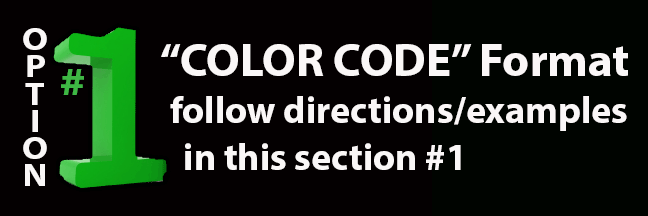


Free-Form Format
Draw a picture, and then study/write/draw whatever Verse Mapping questions/answers all around the picture, in any format.
There is no right or wrong way to do this one because it is the FREE-FORM format, you are free to design it any way you would like to. Have fun as you dig into God’s word.
To see the scripture verses we suggest, click on the “monthly buttons” in the beginning and ending of this post. But feel free to do ANY verses the Lord leads you to and through.
We would love to see your work if you would share a photo either here on this web page or in our Private Facebook Group at www.facebook.com/groups/CbibleJ/
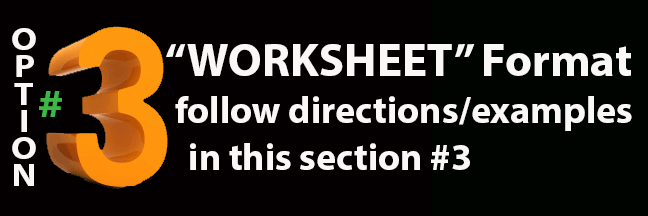
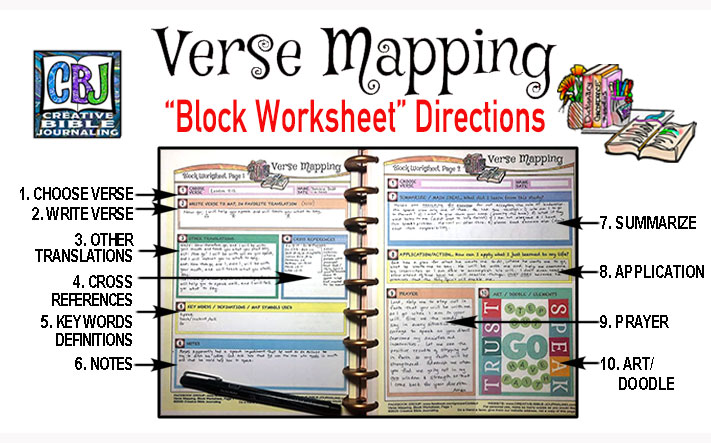
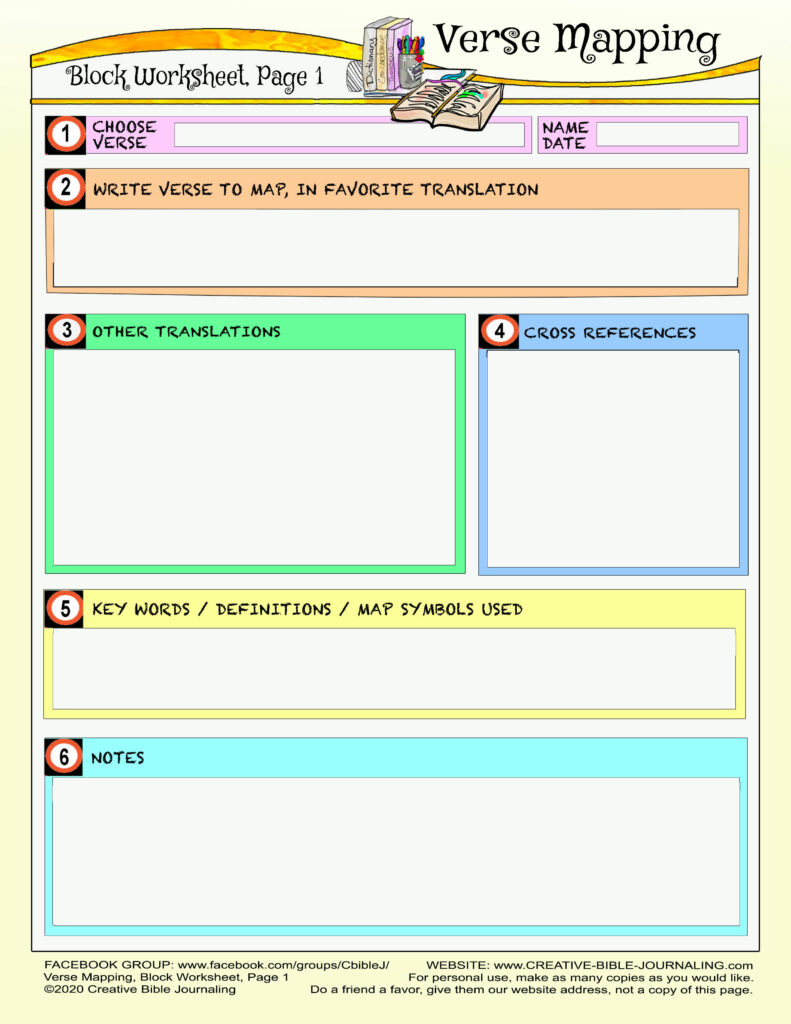
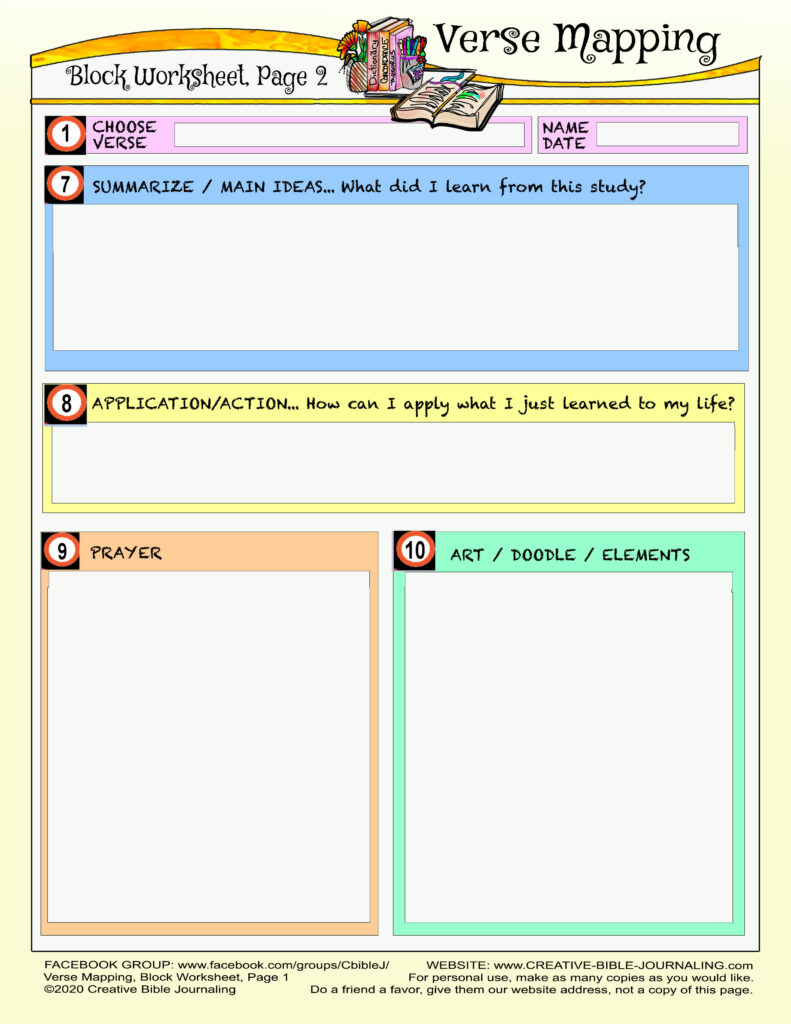
Now it’s your turn… Create & Share
Share your page by posting in the comments of this webpage, or in the CBJ Facebook group www.facebook.com/groups/CbibleJ/
If you are interested in ordering from ChristianBook.com, please click on any of these ads to be directed to their site. Any purchases, while there, will give us a 8% bonus, at no extra cost to you. This will help fund the CBJ ministry here on the web. Thanks ~ Susan

Creative Lettering Workshop
By Lesley Riley / North Light Books
Click to Shop Christianbook.com and
support CBJ, at no extra cost to you!
www.Christianbook.com



